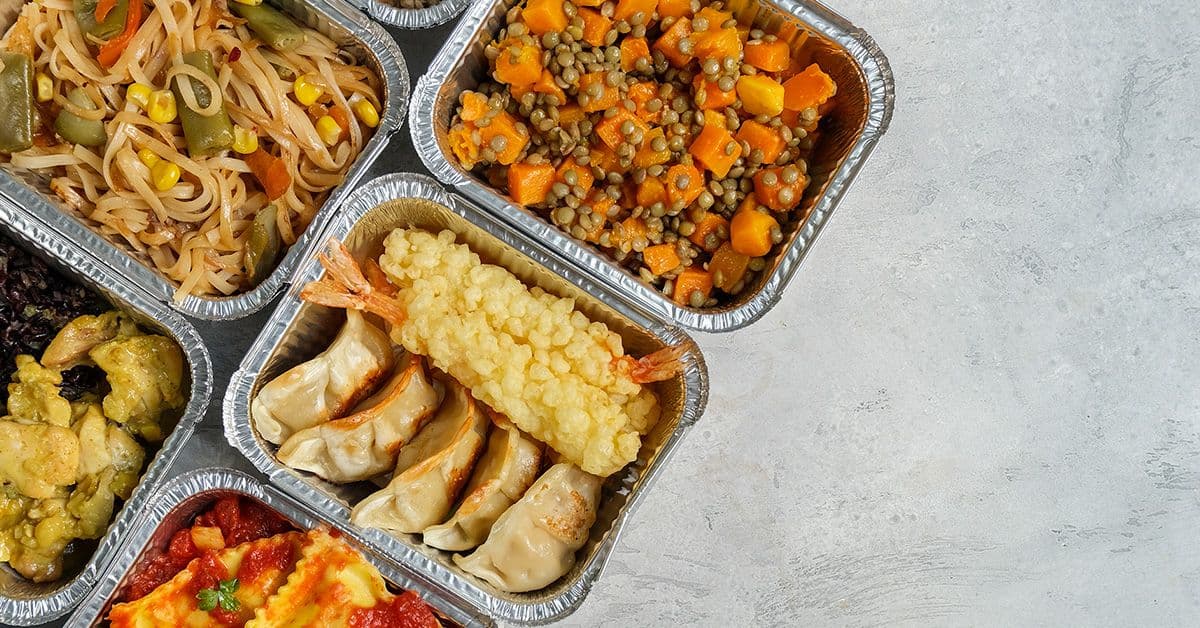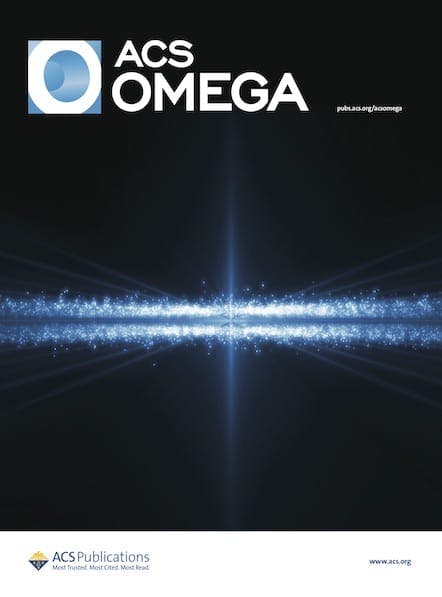Globally, we produce 141 million tons of plastic packaging every year. New work explores a digital twin model of paper–aluminum laminates, demonstrating a promising sustainable alternative to conventional food packaging.

Plastic packaging is incredibly common, but just 9% of all the plastic ever produced has been recycled1—and 90% of today’s plastics are still petroleum-based and nonbiodegradable.2 Packaging, primarily food packaging, is the biggest driver of this, and the largest contributor to municipal solid waste.3 Alternatives such as takeout containers made from polyethylene and aluminum laminates combine the strength and durability of plastic with the moisture- and light-blocking properties of foil. But these often cannot be recycled, and there remains a need to develop new forms of packaging that can perform its intended function sustainably—defined as “meeting the needs of the present without compromising the ability of future generations to meet their own needs”.4 Coupled laminates, which integrate multiple materials into a single composite structure, have gained attention for their unique combination of mechanical performance, barrier properties, and environmental sustainability.5
To address the issue of sustainable packaging, a team working at the IMT School for Advanced Studies in Lucca, Italy, proposed an integrated experimental and simulation study focusing on the mechanical behavior and failure analysis of coupled paper–aluminum laminates for sustainable packaging.6 Published in ACS Omega, this study involved creating two different laminates: one made from aluminum and paper with fibers running parallel to the direction of machine loading (with the grain), and another with fibers running perpendicular to the direction of machine loading (against the grain). They then compared the tensile strength of each to traditional polyethylene-aluminum laminates by stretching samples. A digital model was also created to predict how each laminate would respond in different scenarios.
In tensile strength tests, the polyethylene-aluminum stretched further than either of the paper-based laminates. Of two paper-aluminum materials, the one made from machine-direction paper could be stretched further, but formed cracks along the grain faster than the cross-direction paper. In their simulations, the researchers predicted that a novel laminate pairing aluminum and a paper with fibers both with and against the grain would deliver mechanical properties nearly identical to conventional polyethylene-aluminum laminate.
Sustainability is an essential concept to ensure the future of humanity and the integrity of our resources and ecosystems. But identifying a comprehensive yet realistic way to assess and enhance sustainability has been described as one of the most difficult challenges of our time.7 A Review article in Environmental Science & Technology explores the primary approaches to assessing environmental sustainability, categorizing them as either design-based or those that employ computational frameworks and/or indicators.7 This work also notes that renewable resources such as fish, soil, and groundwater must be used no faster than the rate at which they regenerate, and that non-renewable resources such as minerals and fossil fuels no faster than renewable substitutes for them can be put into place. A third consideration is that pollution and wastes must be emitted no faster than natural systems can absorb, recycle, or render them harmless—and with our vast appetite for packaging showing no signs of reducing, it is this last point that new laminates and materials seeks to address. It is hoped the new work highlights the substantial potential of paper-based materials as environmentally friendly alternatives, particularly in contrast to existing laminates.
References
- https://www.ipoly.uk.com/statistics/plastic-packaging-statistics-2023
- Arrieta, M.P. et al. An overview of nanoparticles role in the improvement of barrier properties of bioplastics for food packaging applications. In Food Packaging 2017; 391–424.
- Zhao, X. et al. Narrowing the Gap for Bioplastic Use in Food Packaging: An Update. Environ. Sci. Technol. 2020, 54, 8, 4712–4732.
- Brundtland, G.H. (1987) Our Common Future: Report of the World Commission on Environment and Development. Geneva, UN-Dokument A/42/427.
- Stark, N.M. and Matuana, L.M. Trends in sustainable biobased packaging materials: a mini review. Mater. Today Sustain. 2021, 15, 100084.
- Zarei, H. et al. Digital Twin Model of Paper–Aluminum Laminates for Sustainable Packaging. ACS Omega 2024, 9, 41, 42386–42395
- Little, J.C. et al. Assessing and Enhancing Environmental Sustainability: A Conceptual Review. Environ. Sci. Technol. 2016, 50, 13, 6830–6845.
